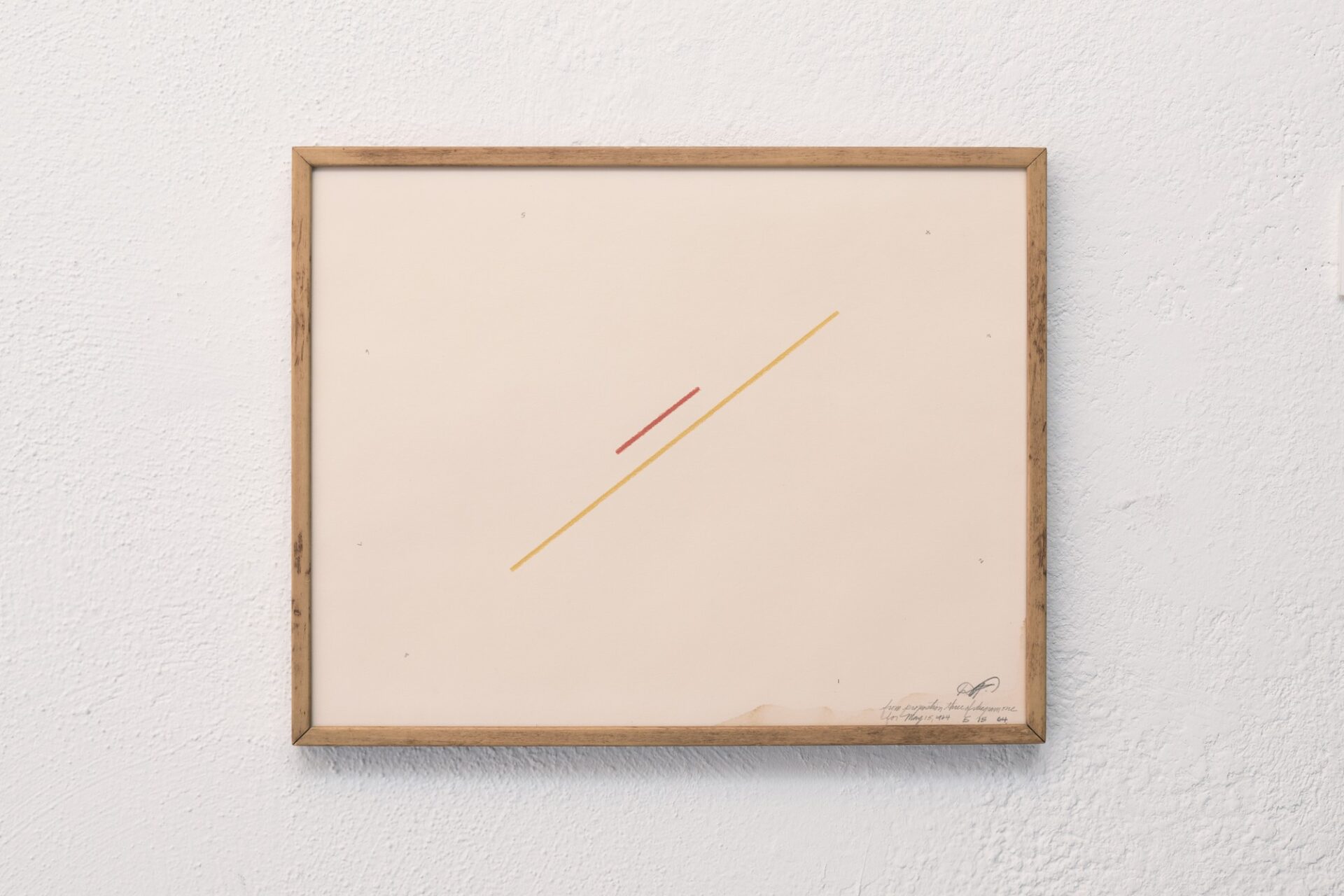Donald Judd met Dan Flavin in 1962 at a gathering in a Brooklyn apartment organized to discuss the possibility of a cooperative artist-run gallery. They exhibited together a year later when their work was included in New Work: Part I at Richard Bellamy’s Green Gallery. As their mutual friend, the artist John Wesley, has said of their friendship, “[the two] became Flavin and Judd for a while. The two names were together.”1
Like Judd, Flavin avoided the word “sculpture” when discussing his works in three dimensions, sometimes using the words “installation,” “system,” or “proposition,” emphasizing the variable relationship between the lights he used and the surrounding space. By using the word “diagram” to describe his drawings, he underscored their technical nature: “The colored lines, which appear to float in space, were an attempt to visualize the effect of the colored lights.”2 This work and from proposition two of diagram one for May 15 1964, dated 5 15 64, have the same configuration, but with the colors reversed.
The work for which this “proposition” was realized by Flavin was untitled, 1964, an edition of five works in red and yellow fluorescent light with the yellow light on the bottom.
